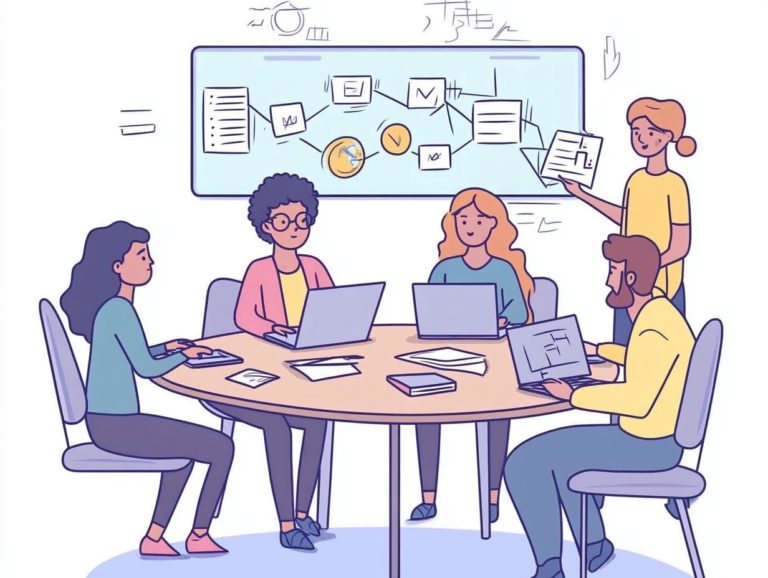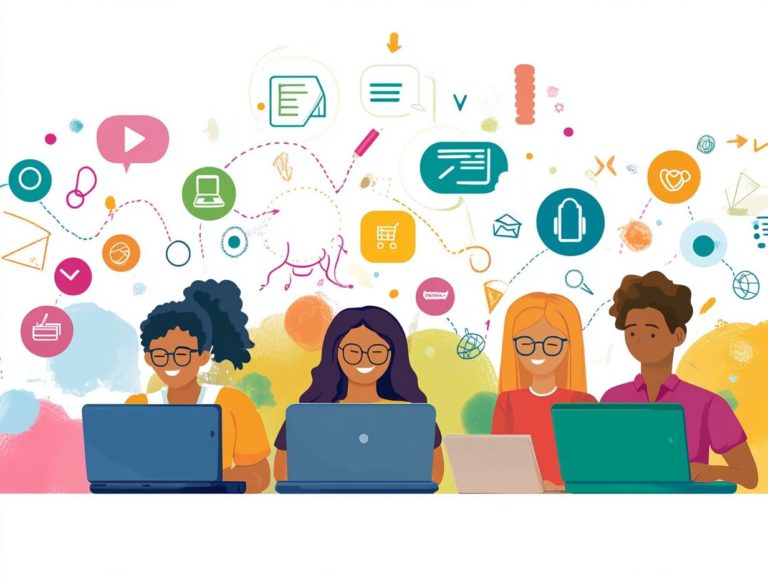5 Strategies for Effective E-Learning Content
In today s fast-paced digital landscape, creating effective e-learning content is vital for both organizations and individual learners like you.
This article delves into five key strategies that will help you craft engaging and impactful e-learning experiences. By identifying clear learning objectives and incorporating multimedia elements, you ll navigate through best practices designed to enhance both learning and retention.
You will explore the numerous benefits of e-learning. Learn how to tailor your content to speak directly to different learners! Identify common pitfalls to avoid and stay updated on the latest trends shaping the future of online education.
Dive in to uncover how you can elevate your e-learning content to new heights!
Contents
- Key Takeaways:
- 1. Identify the Learning Objectives
- 2. Use Interactive and Engaging Content
- 3. Incorporate Multimedia Elements
- 4. Provide Opportunities for Practice and Feedback
- 5. Utilize Gamification Techniques
- How Can E-Learning Benefit Organizations and Individuals?
- Frequently Asked Questions
- What are the 5 strategies for effective e-learning content?
- How do clear learning objectives contribute to effective e-learning content?
- Why is it important to make e-learning content interactive and engaging?
- What is the benefit of incorporating personalized learning paths in e-learning content?
- How do regular assessments and feedback contribute to effective e-learning content?
- Why should e-learning content include multimedia elements?
Key Takeaways:
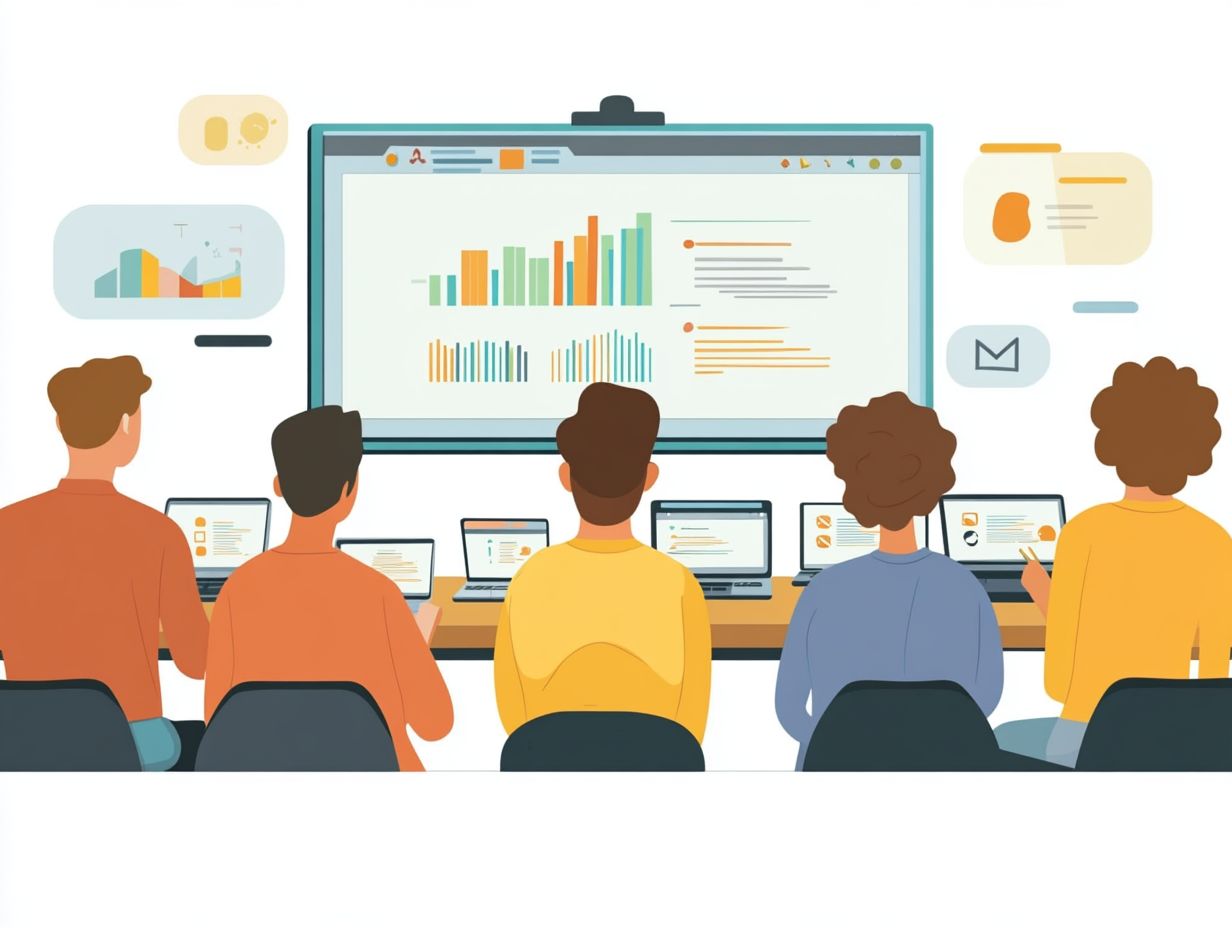
- Identifying clear learning objectives is crucial for effective e-learning content.
- Incorporating interactive content keeps learners motivated and promotes active learning.
- Multimedia elements like videos, graphics, and animations enhance the learning experience and improve retention.
1. Identify the Learning Objectives
Identifying clear learning objectives is essential for your effective teaching strategy. These objectives set the framework for your entire e-learning experience. They ensure that both you as the educator and your learners engage with the content in a meaningful way.
This approach ultimately enhances both engagement and retention.
By establishing specific goals, you can tailor your methods to meet the unique needs of your audience. This fosters a deeper emotional connection and elevates the overall learner experience.
Clear objectives act as your guiding compass for content structure. They help you prioritize topics and determine the order in which to present them. When your goals are well-defined, they enable a more accurate analysis of your audience.
This understanding enriches engagement, as students can see how the material relates to their own lives and aspirations.
Ultimately, aligning your teaching strategy with clearly defined outcomes creates a more coherent learning experience. Incorporating techniques for storytelling in e-learning significantly enhances the effectiveness of the e-learning environment, leading to improved knowledge retention and application.
2. Use Interactive and Engaging Content
Utilizing interactive content in your e-learning endeavors is crucial for capturing learners’ attention. It fosters a deeper emotional connection and enhances overall engagement through stimulating experiences that can be further improved by exploring 5 ways to encourage knowledge sharing via e-learning that spark curiosity.
Consider incorporating various types of interactive content, such as quizzes, simulations, and scenario-based learning. Quizzes offer immediate feedback, enabling you to assess understanding and build confidence.
Simulations immerse learners in realistic scenarios, allowing for the practical application of knowledge making learning not just theoretical but truly experiential.
Scenario-based learning invites you to navigate guided challenges, honing your critical thinking and decision-making skills. These interactive elements ignite curiosity and engage learners meaningfully, significantly bolstering retention.
When you actively participate, the overall experience becomes more enjoyable and markedly more effective in transferring knowledge.
Start creating your captivating e-learning content today!
3. Incorporate Multimedia Elements
Incorporating multimedia elements into your e-learning content not only enhances its visual appeal but also helps reduce mental effort, making complex information easier to digest. For more strategies, check out these tips for engaging employees in e-learning. This approach significantly improves your overall learner experience by offering varied modes of presentation.
Think of videos that vividly illustrate concepts, audio clips that provide narrated explanations, and infographics that summarize key points visually. When you, as a course creator, weave these multimedia components into your courses, you cater to the diverse ways individuals process information. This ensures that visual learners, auditory learners, and kinesthetic learners all have valuable opportunities to engage with the material.
This rich assortment of resources not only reinforces the content being taught but also fosters a deeper understanding. Ultimately, this contributes to better retention and effective application of knowledge in real-world scenarios, making your e-learning experience truly impactful.
4. Provide Opportunities for Practice and Feedback
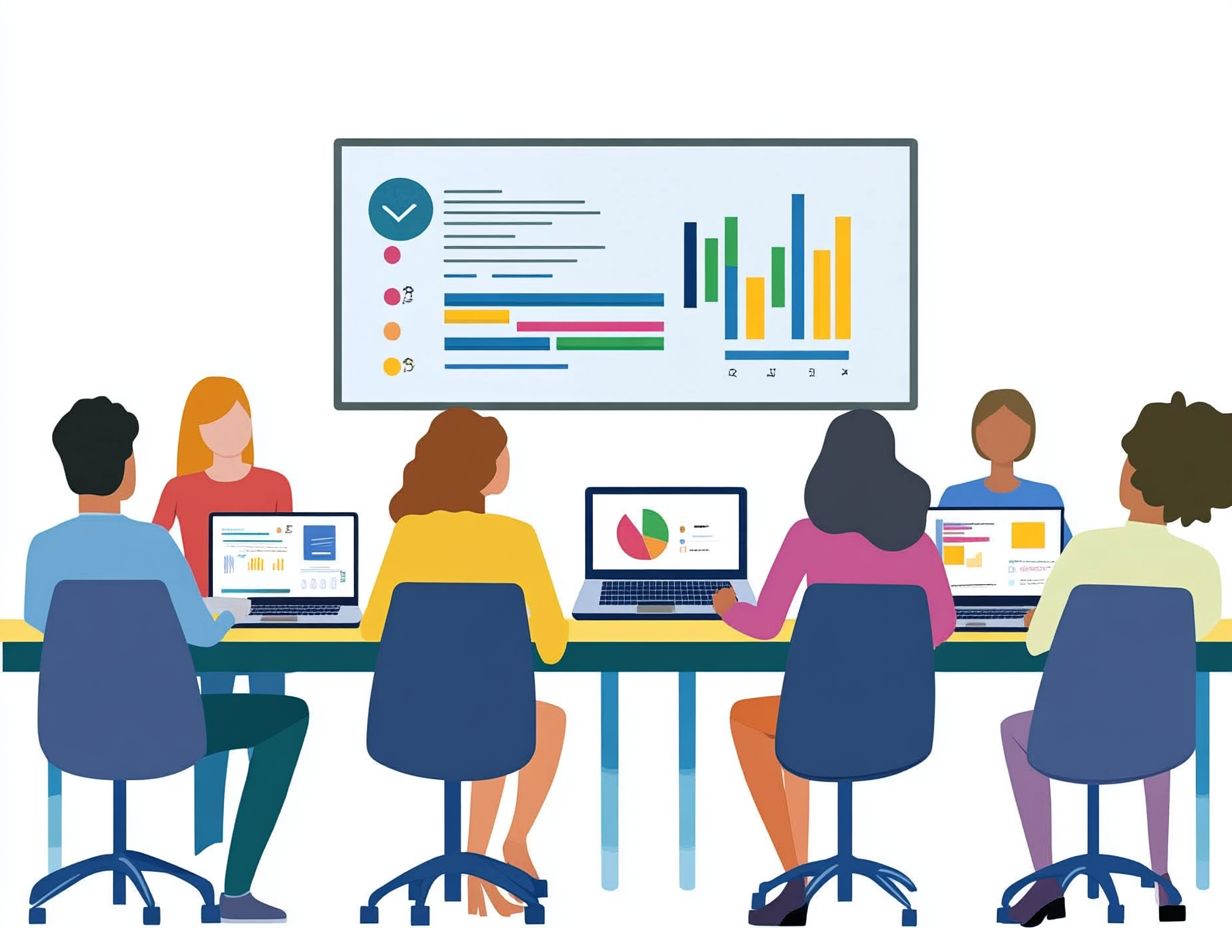
Providing ample opportunities for practice and constructive feedback in e-learning is essential for reinforcing your learning and enhancing retention. It also ensures you can effectively apply new knowledge in real-world scenarios.
Incorporating a variety of methods like quizzes, peer reviews, and instructor evaluations can significantly elevate your overall learning experience. Quizzes are excellent tools for assessing your understanding and encourage repetition, deepening your grasp of the concepts at hand.
Peer reviews not only foster collaboration but also expose you to diverse perspectives, enriching your insights further. Meanwhile, personalized feedback from instructors can pinpoint areas where improvement is needed, guiding you toward mastery in your subject.
Together, these practices engage you more thoroughly, cultivating a dynamic learning environment where concepts aren’t just memorized but truly internalized. Start practicing today to enhance your skills!
5. Utilize Gamification Techniques
Utilizing gamification techniques (adding game-like elements to learning) in e-learning transforms your traditional learning environment into a dynamic and engaging space. By incorporating competitive elements, rewards, and challenges, you enhance learner engagement, particularly in corporate training and beyond.
Imagine integrating features like points systems, leaderboards, and digital badges into your educational approach. This creates an immersive experience that encourages active participation and a pursuit of mastery among learners.
Take Duolingo, for example; it s a stellar illustration of successful gamification, using these elements to foster friendly competition and celebrate achievements. This not only boosts motivation but also significantly enhances knowledge retention, making it more likely for learners to engage with material in a playful manner.
Companies like Microsoft embrace game-like scenarios within their training modules, resulting in impressive performance improvements and increased employee satisfaction. Adopting such innovative strategies can elevate the learning experience and yield remarkable outcomes. Start gamifying your courses for an exciting learning journey!
How Can E-Learning Benefit Organizations and Individuals?
E-learning presents a myriad of advantages for both organizations and individuals, offering flexible learning solutions that enrich the learning experience while ensuring efficient corporate training, cost-effectiveness, and enhanced knowledge retention across diverse environments.
For organizations, scaling training programs becomes a breeze, allowing you to accommodate a growing workforce without the hefty investment in physical classroom space. This accessibility enables employees to engage with content whenever and wherever they choose, a particularly valuable feature for distributed teams or remote workers.
On an individual level, personalized learning paths facilitate targeted skill development, making your learning experience not only more relevant but also far more engaging. The ability to learn at your own pace fosters a deeper understanding of the material, ultimately leading to a more meaningful and impactful educational journey.
These tailored experiences empower you to reflect on your strengths and weaknesses while effectively advancing your professional development. Embrace the benefits of e-learning today to unlock your potential!
What Are the Different Types of E-Learning Content?
The landscape of e-learning is rich with diverse content types, and following best practices for implementing e-learning can enhance their effectiveness. These include online courses, microlearning modules, and interactive assessments.
Each type caters to different learning styles and strategies. This structure boosts engagement and retention.
You can classify content by length and complexity. This ranges from brief microlearning units focused on specific skills to comprehensive online courses that explore subjects in-depth.
Interactivity enhances your learning experience. Simulations and gamified assessments invite you to actively participate and increase motivation.
Mixing these elements creates a dynamic learning environment. This not only captures your interest but also promotes better retention of information.
How Can E-Learning Content Be Customized for Different Learners?
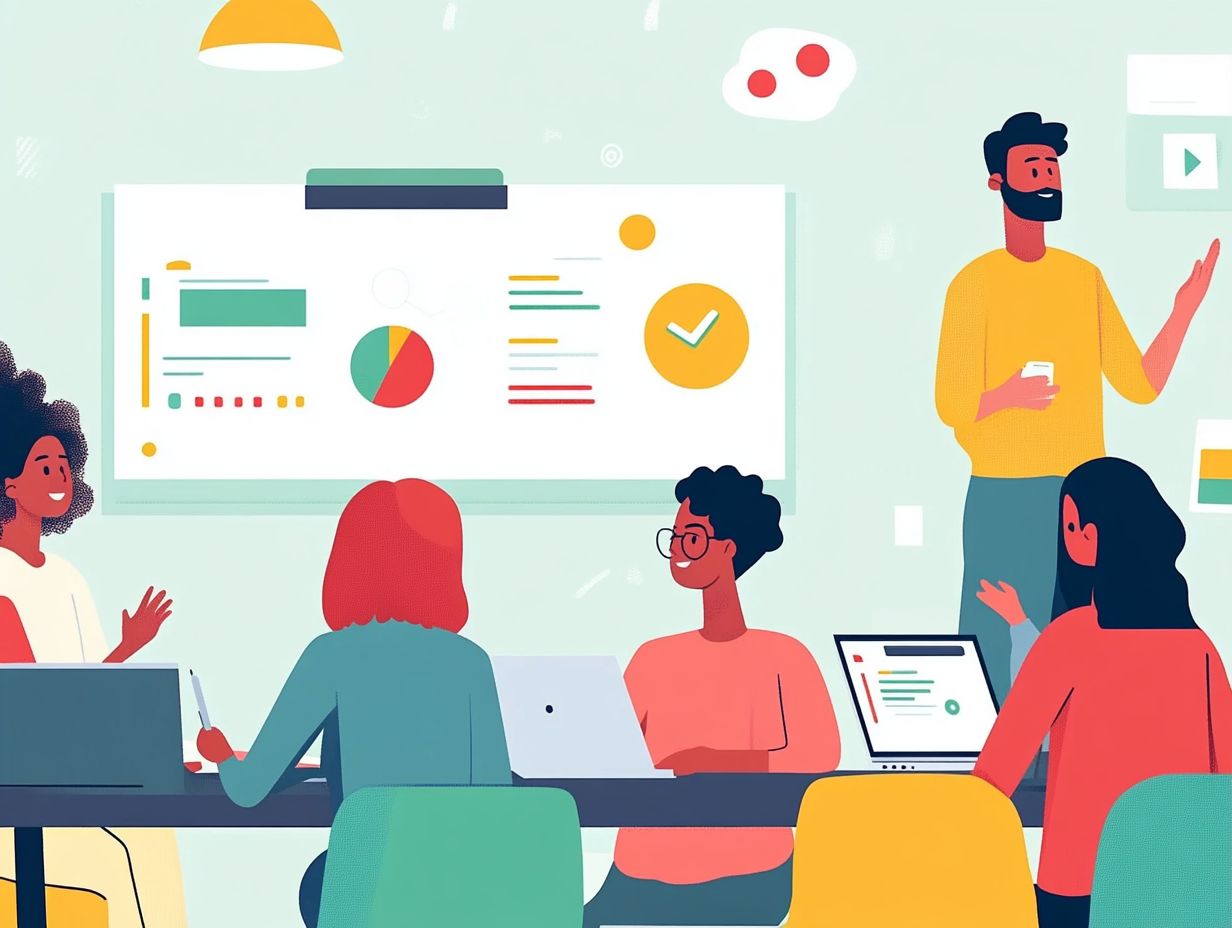
Customizing e-learning content means diving into personalization techniques. These techniques consider factors like prior knowledge, learning preferences, and individual goals.
This approach acknowledges the diversity among learners. It creates an engaging atmosphere where everyone feels valued.
Using adaptive learning tools lets you adjust difficulty levels based on progress. This ensures you re neither overwhelmed nor under-challenged.
Incorporating multimedia elements, such as videos for visual learners and podcasts for auditory learners, offers varied methods to engage. Customizing content to align with your interests boosts motivation and retention.
What Are the Common Mistakes to Avoid in E-Learning Content?
Avoid pitfalls like excessive cognitive load, unclear objectives, and a lack of interactivity. These mistakes can hinder instructional design and reduce learner engagement.
Aligning content with learners prior knowledge is essential. Ignoring this connection may lead to frustration and disengagement.
Using a variety of instructional strategies is crucial. Relying on traditional methods can make content monotonous. For a more engaging experience, consider following 5 tips for designing mobile-friendly e-learning.
Focus on clarity in your learning objectives. Engage learners with multimedia elements and gather feedback regularly.
By crafting a tailored and dynamic learning experience, you enhance retention rates.
How Can E-Learning Content Be Evaluated for Effectiveness?
Evaluating e-learning content is essential to ensure learning objectives are met. It enriches the learner experience.
Use a variety of assessment methods to gauge knowledge retention and engagement levels.
Integrate formative assessments for ongoing feedback and summative assessments at course conclusion. Learner feedback provides invaluable insights into the user experience.
Analytics also offer data-driven insights into how learners interact with content. Synthesize these evaluation methods for informed adjustments.
These improvements enhance instructional design and promote continuous improvement, leading to a more effective learning environment.
What Are the Emerging Trends in E-Learning Content Development?
Emerging trends in e-learning content development are transforming how you create and deliver educational materials. By integrating storytelling approaches, advanced instructional strategies, and enhanced interactive elements, you can create more engaging and effective learning experiences. To maximize these benefits, consider exploring how to develop a successful e-learning strategy.
In this rapidly evolving landscape, the incorporation of artificial intelligence truly stands out. It enables personalized learning experiences that adapt to your unique needs and preferences. Adaptive learning technologies are revolutionizing instructional design by tailoring content and pacing to optimize understanding and retention.
This shift toward learner-focused design deepens engagement and actively encourages participation and motivation. As these advancements gain momentum, you can find exciting new ways to create immersive and interactive environments that convey knowledge while cultivating critical thinking and problem-solving skills, equipping you for a complex world.
Frequently Asked Questions
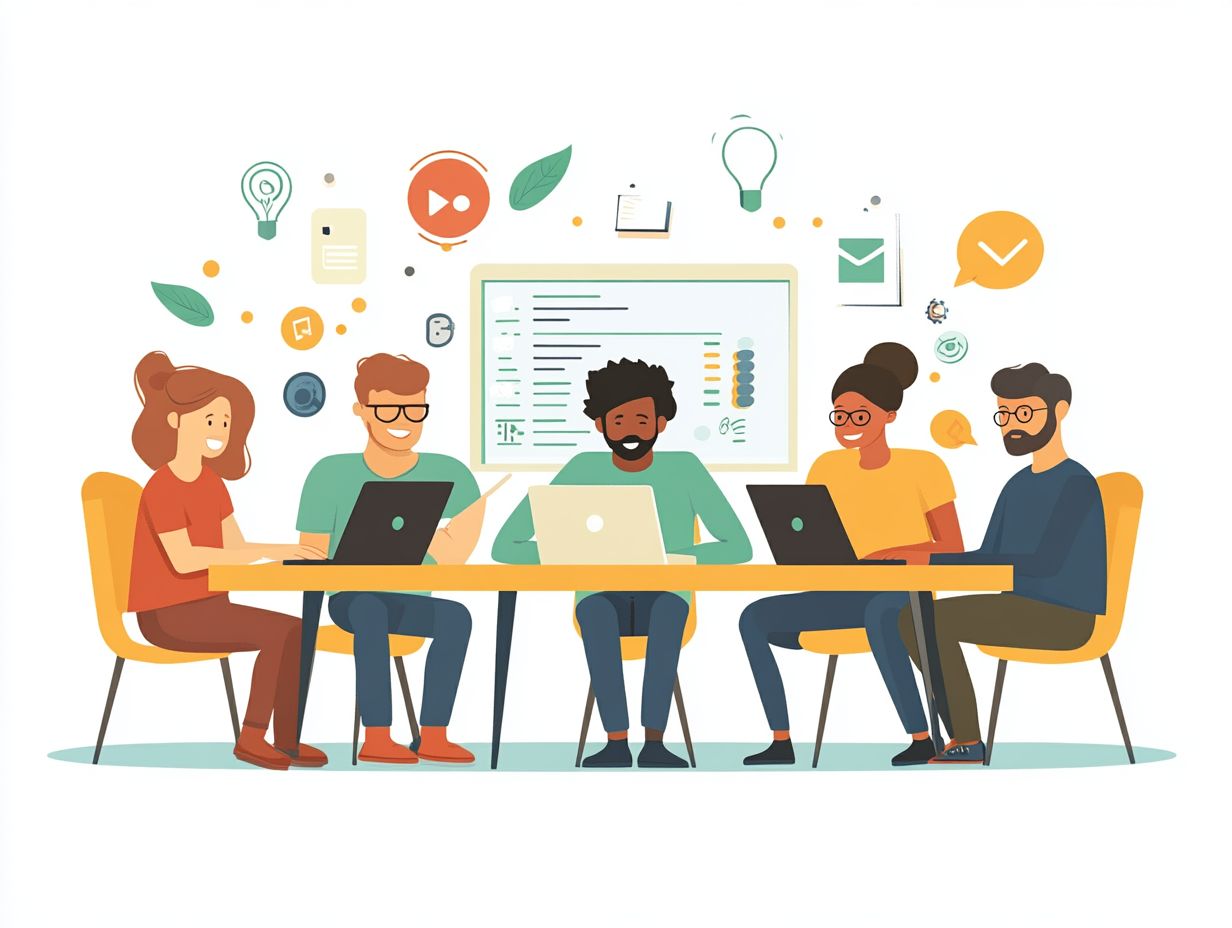
What are the 5 strategies for effective e-learning content?
The 5 strategies for effective e-learning content are: clear learning objectives, interactive and engaging content, personalized learning paths, regular assessments and feedback, and incorporating accessibility in e-learning through multimedia elements.
How do clear learning objectives contribute to effective e-learning content?
Clear learning objectives help learners understand what they are expected to achieve through the e-learning content. This clarity keeps them focused and motivated throughout the course.
Why is it important to make e-learning content interactive and engaging?
Interactive and engaging e-learning content helps keep learners interested and involved, making the learning experience more enjoyable and effective. For insights on how to enhance your content, check out these 5 tips for creating engaging e-learning videos.
What is the benefit of incorporating personalized learning paths in e-learning content?
Personalized learning paths allow learners to progress at their own pace and focus on areas that need improvement, leading to a more efficient and effective learning experience.
How do regular assessments and feedback contribute to effective e-learning content?
Regular assessments and feedback help learners track their progress and identify areas needing more practice or clarification, enhancing the learning experience.
Why should e-learning content include multimedia elements?
Multimedia elements, such as videos, animations, and interactive simulations, can make the learning experience more engaging, memorable, and effective by catering to different learning styles and preferences.
Explore these trends now to stay ahead in the learning landscape!


